Nearby Freeman Wildfire, Occultation of Spica
Posted: 14 July 2024
Thursday, 11 July 2024, was mostly cloudy. Late afternoon there were some strong thunderstorms in the area.
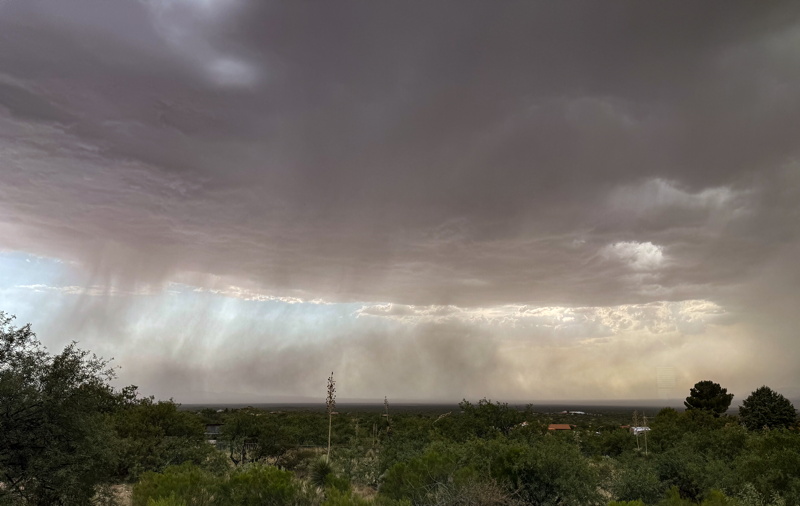
Two lightning strikes from a severe storm started the Freeman Fire in the mountains about 20 miles northwest of Oracle.
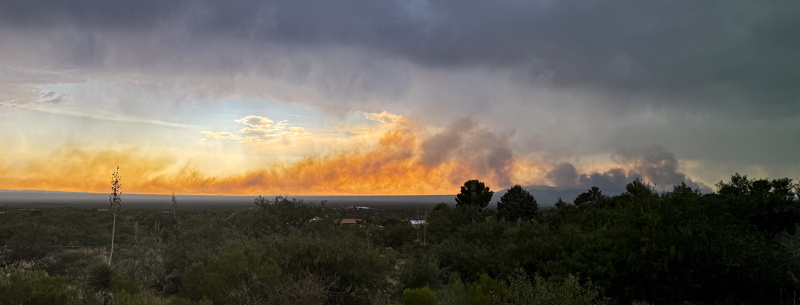
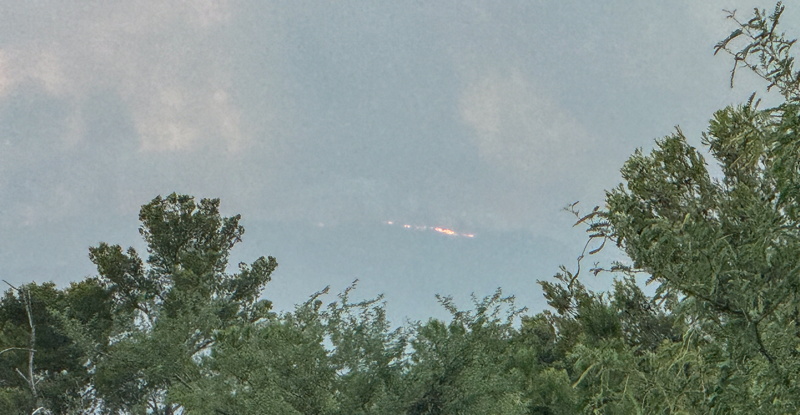
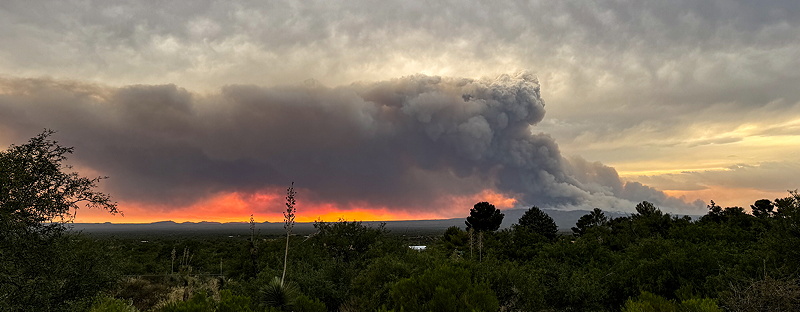
That evening had some visitors to the observatory, but unfortunately the sky was cloudy and smoky. After they left I put the Dome Cover ON since thunderstorms were in the forecast for the next several days. Unfortunately, a SpaceX Falcon 9 rocket launch from Vandenberg Space Force in California was obscured by clouds and smoke. It probably would not have been visible anyway due to the bright sky at sunset.
About two hours after it started, the Freeman Fire was already at 1,000 acres. About an hour later it was 1,750 acres.
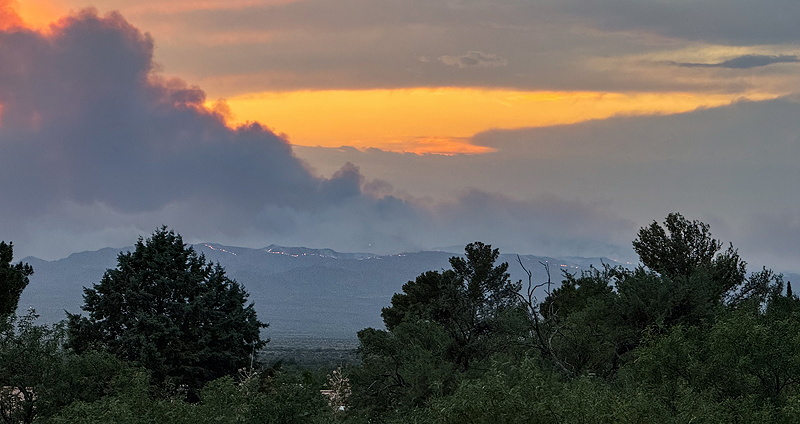
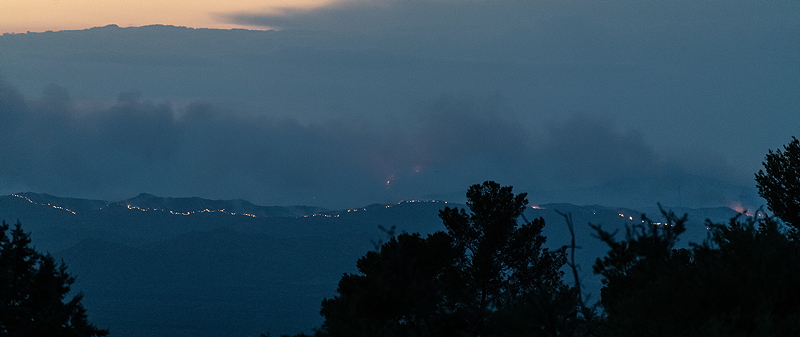
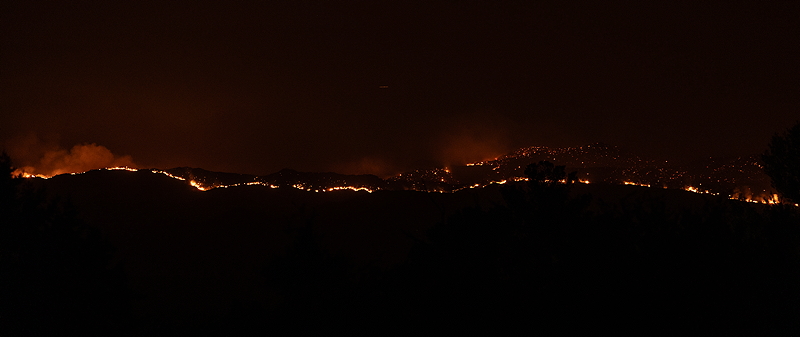
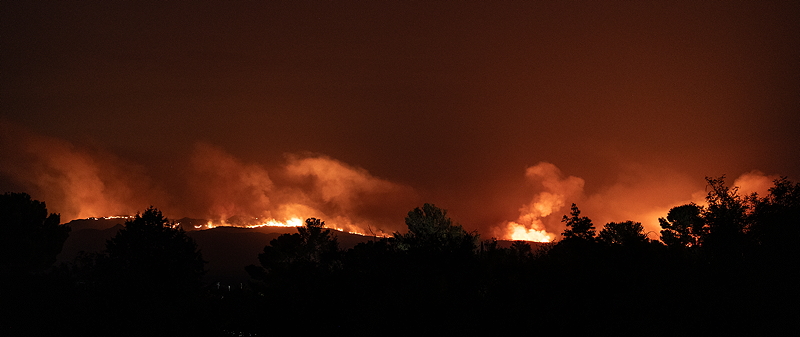
Due to wind overnight, by sunrise on Friday, 12 July, the fire was at 10,000 acres with no containment. The fire was 26,000 acres mid-morning and 28,000 early afternoon with no containment. InciWeb reported Freeman Fire as 9.5 miles from Oracle. The Sun was very red at sunset. Sunspot AR3738 is visible in the cropped photo. That night active flames were less than on the previous night.
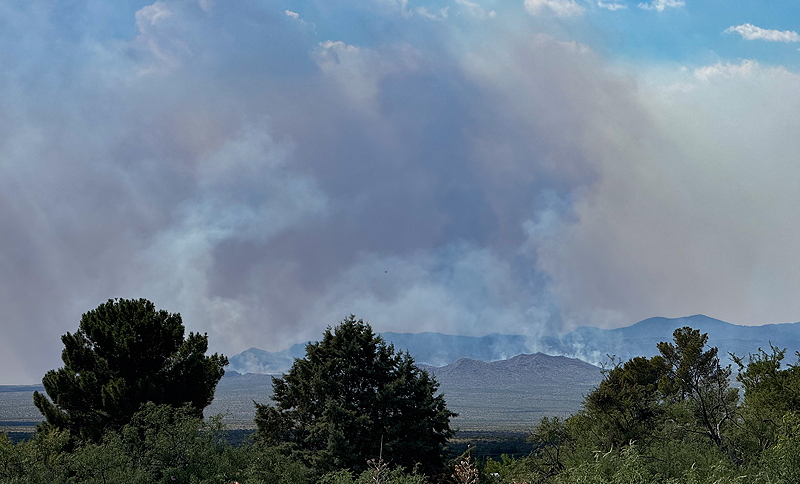
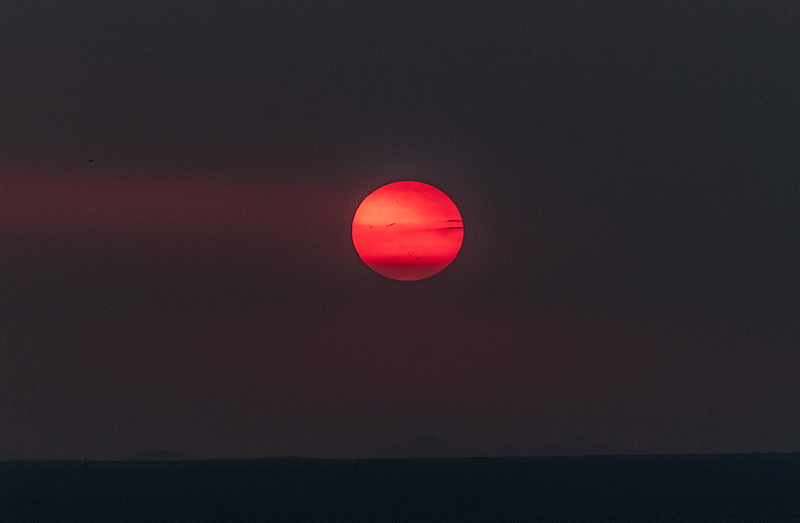
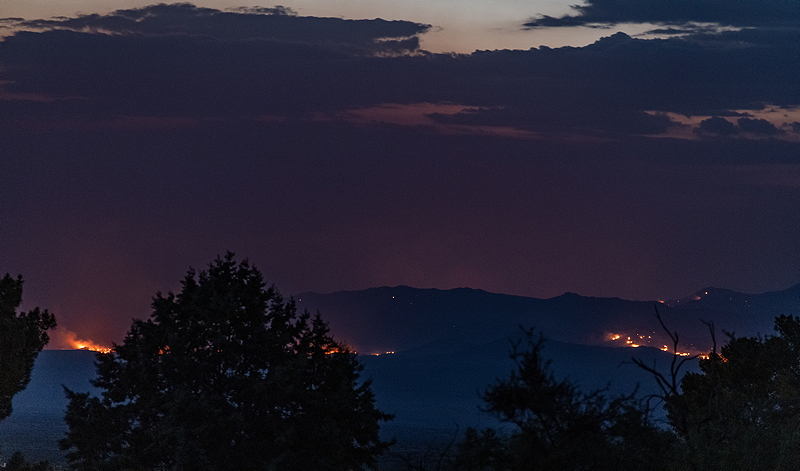
Saturday, 13 July, dawned with a clear sky and very little smoke visible from the Freeman Fire. The fire increased to 31,727 acres, 5% containment, late afternoon on Saturday. Cloud coverage increased during the day, but began clearing late afternoon.
|
Open: Saturday, 13 July 2024, 1911 MST Temperature: 91°F |
Session: 1996 Conditions: Mostly clear, smoky |
Equipment:
12" f/8 LX600 w/StarLock
2" 24mm UWA eyepiece
12x50 binoculars
Focal reducer
Camera:
D850 DSLR
iPhone 15 Pro Max
1914 MST: Dome Cover OFF. SYNCed observatory clock to WWV time signals.
1919 MST: LX600 ON, StarLock OFF, High Precision OFF.
Viewed the Moon, 102X. The star Spica was also in the same field-of-view. Spica would be occulted by the Moon later.
Prepared the D850 DSLR for lunar imaging. Then mounted the D850 camera at prime focus + focal reducer. SYNCed the camera clock.
1932 MST: Sunset. (Time approximate due to clouds along the western horizon.)
1936 MST: Spica and the Moon (1/400sec, ISO 200). Spica is to the lower left of the Moon.
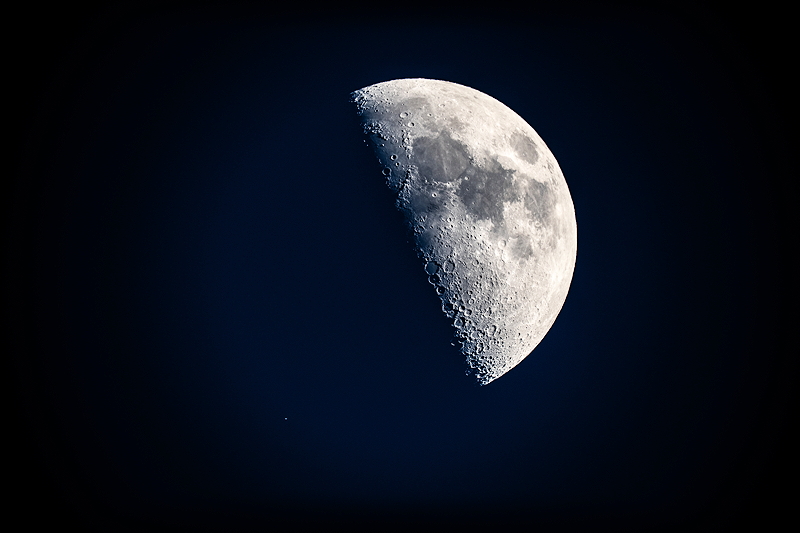
I then did a test video recording of the Moon and Spica to get a proper exposure to avoid overexposing the Moon and yet still show Spica.
Viewed the Moon, 12x50 binoculars. Spica was clearly seen to the left of the Moon.
1950 MST: Began a video recording of the Moon and Spica (1/60sec, ISO 200, 1080p, 60fps).
Click to view video (5 seconds)
Watch a larger video of the Spica Occultation Disappearance (5 seconds).
2000 MST: I then relaxed on the observatory patio bench to enjoy being under the stars while waiting for the time of Spica's reappearance.
2054 MST: Took this iPhone 15 Pro Max photo of the Freeman Fire (Night Mode, 3 seconds, 2X lens).
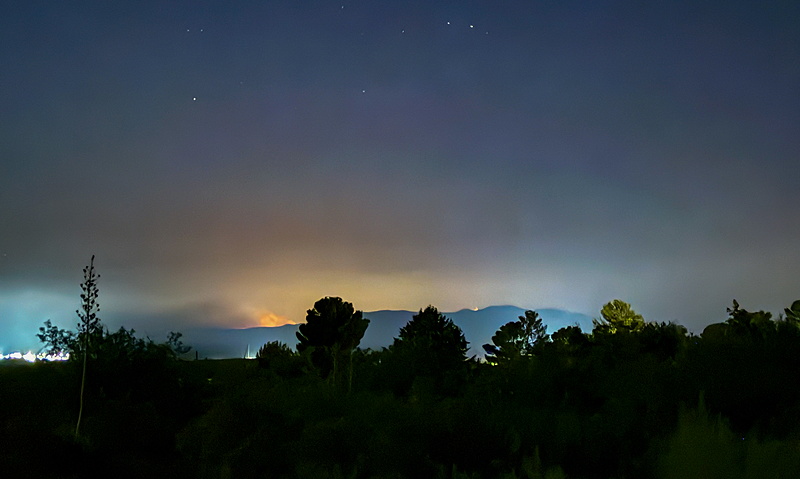
2100 MST: Back in the observatory. Clouds were increasing, but fortunately were not close to the Moon.
2110 MST: Began a video recording of the Moon and the reappearance of Spica (1/60sec, ISO 200, 1080p, 60fps). Spica will appear about 3 o'clock off the Moon's illuminated side.
Click to view video (31 seconds)
Watch a larger video of the Spica Occultation Reappearance (31 seconds).
2117 MST: Spica and the Moon (1/400sec, ISO 200). Spica is to the right of the Moon.
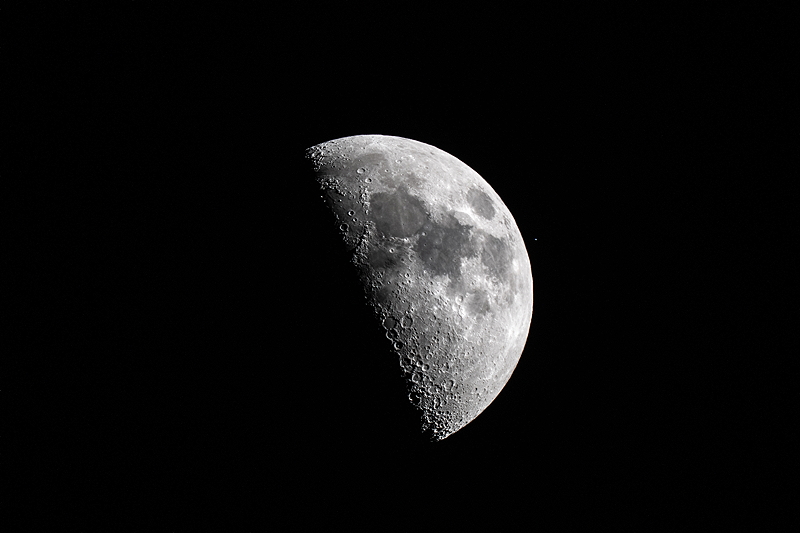
I then saw this large (1.5" long) beetle in the observatory.
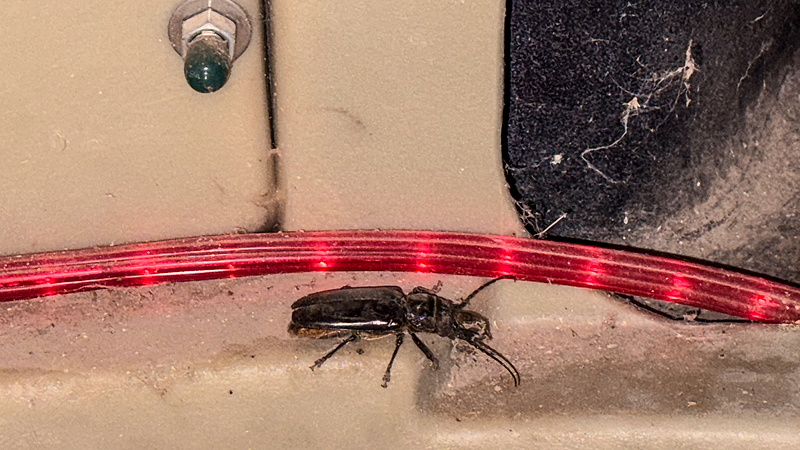
Viewed the Moon and Spica, 102X.
2129 MST: LX600 OFF.
2143 MST: Dome Cover ON. (More thunderstorms were in the forecast for the coming days.)
|
Close: Saturday, 13 July 2024, 2145 MST Temperature: 83°F |
Session Length: 2h 34m Conditions: Partly cloudy, smoky |
2150 MST: After leaving the observatory I took this iPhone 15 Pro Max photo of the Freeman Fire (Night Mode, 3 seconds, 2X lens).
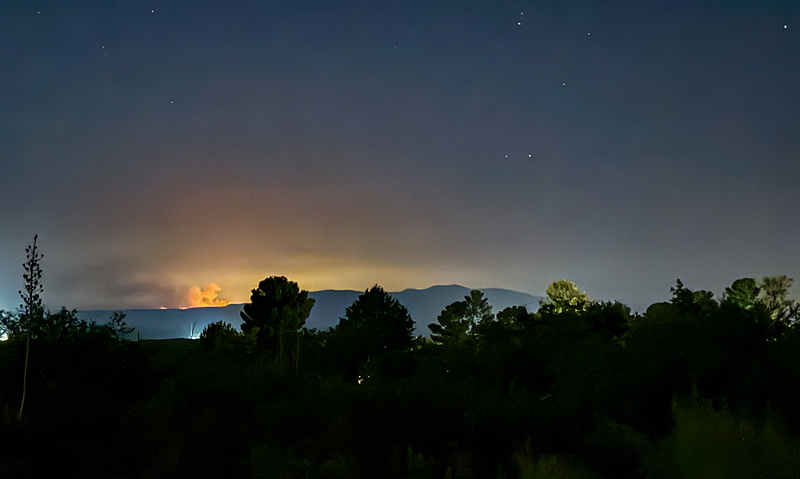
Rumors began appearing on Thursday, 11 July 2024, that Orion Telescopes & Binoculars and Meade Instruments ceased operations. This Sky & Telescope article appeared on Friday, 12 July.
Comments are welcome using Email. Please read the Email Etiquette guidance.
Cassiopeia Observatory Home Page
Copyright ©2024 Michael L. Weasner / mweasner@mac.com.
URL = http://www.weasner.com/co/Reports/2024/07/14/index.html
